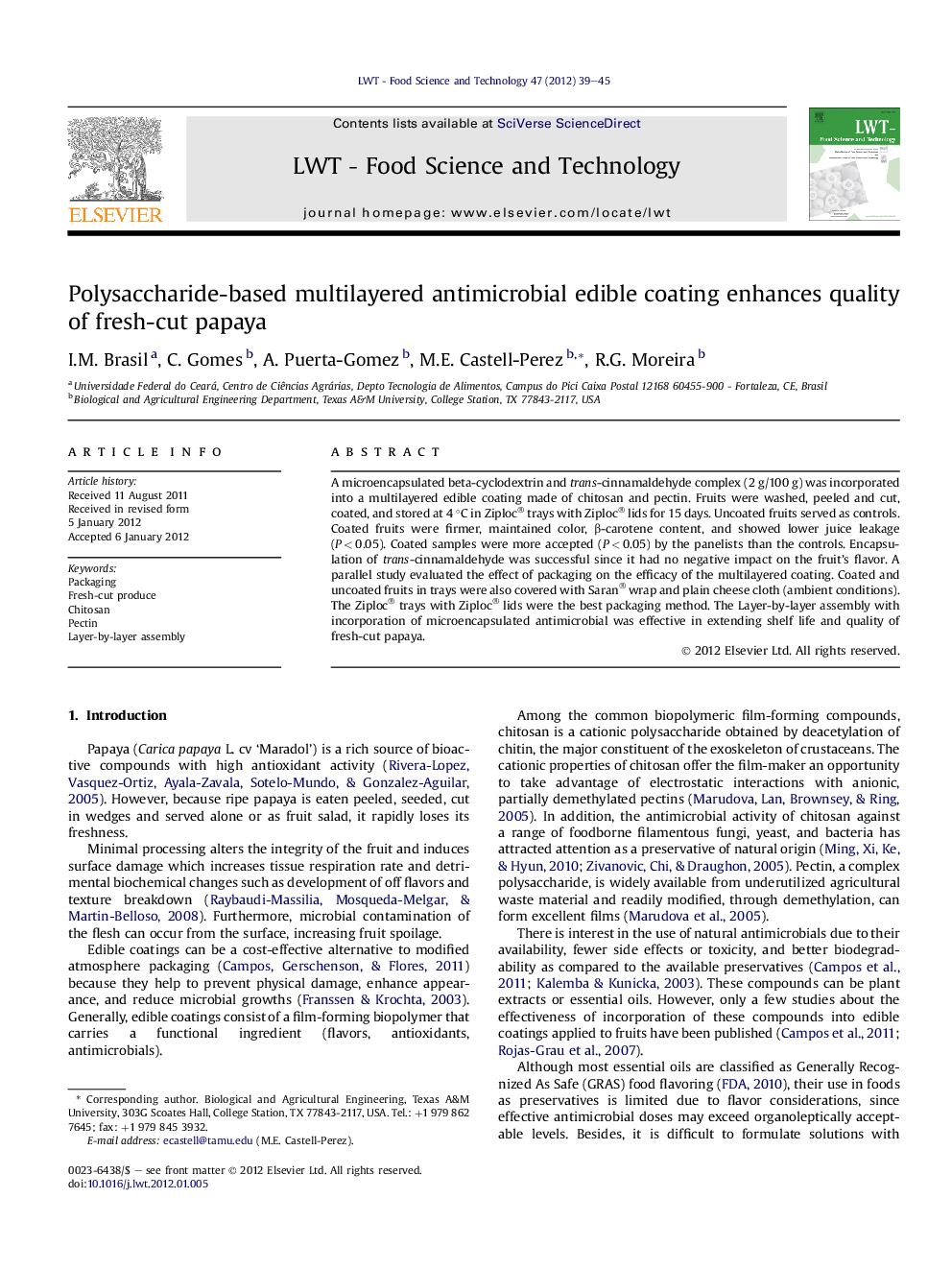| Article ID | Journal | Published Year | Pages | File Type |
|---|---|---|---|---|
| 6405202 | LWT - Food Science and Technology | 2012 | 7 Pages |
A microencapsulated beta-cyclodextrin and trans-cinnamaldehyde complex (2 g/100 g) was incorporated into a multilayered edible coating made of chitosan and pectin. Fruits were washed, peeled and cut, coated, and stored at 4 °C in Ziploc® trays with Ziploc® lids for 15 days. Uncoated fruits served as controls. Coated fruits were firmer, maintained color, β-carotene content, and showed lower juice leakage (P < 0.05). Coated samples were more accepted (P < 0.05) by the panelists than the controls. Encapsulation of trans-cinnamaldehyde was successful since it had no negative impact on the fruit's flavor. A parallel study evaluated the effect of packaging on the efficacy of the multilayered coating. Coated and uncoated fruits in trays were also covered with Saran® wrap and plain cheese cloth (ambient conditions). The Ziploc® trays with Ziploc® lids were the best packaging method. The Layer-by-layer assembly with incorporation of microencapsulated antimicrobial was effective in extending shelf life and quality of fresh-cut papaya.
⺠The LbL assembly with microencapsulated antimicrobial enhanced quality of fresh-cut papaya. ⺠Coated fruits lasted longer (15 days) compared to uncoated controls (7 days). ⺠Multilayered edible coating improved retention of vitamin and total carotenoids. ⺠Encapsulation of trans-cinnamaldehyde had no negative impact on the fruit's flavor. ⺠The Ziploc® tray with lid is the recommended package to store fresh-cut papaya under refrigeration.
